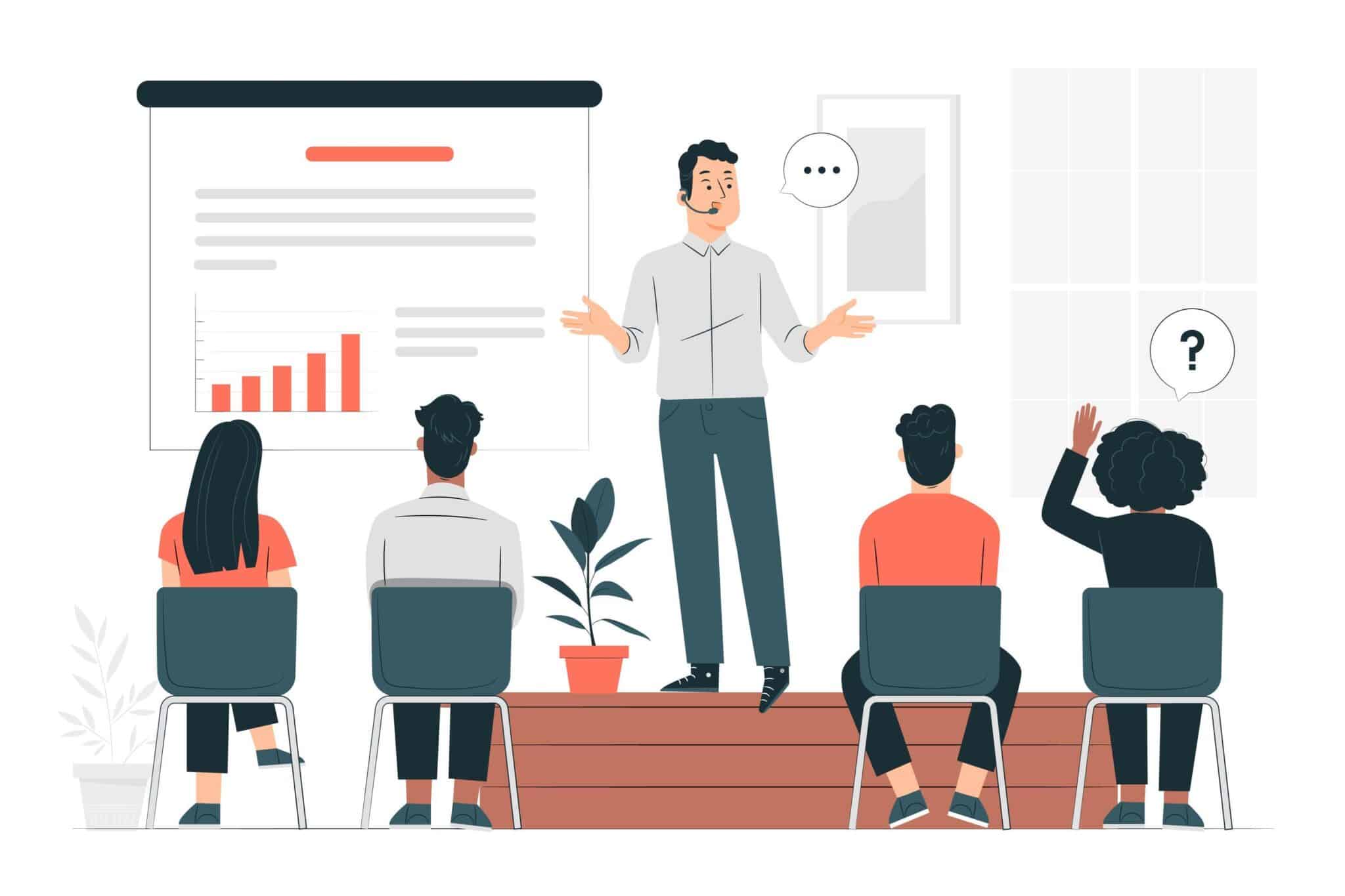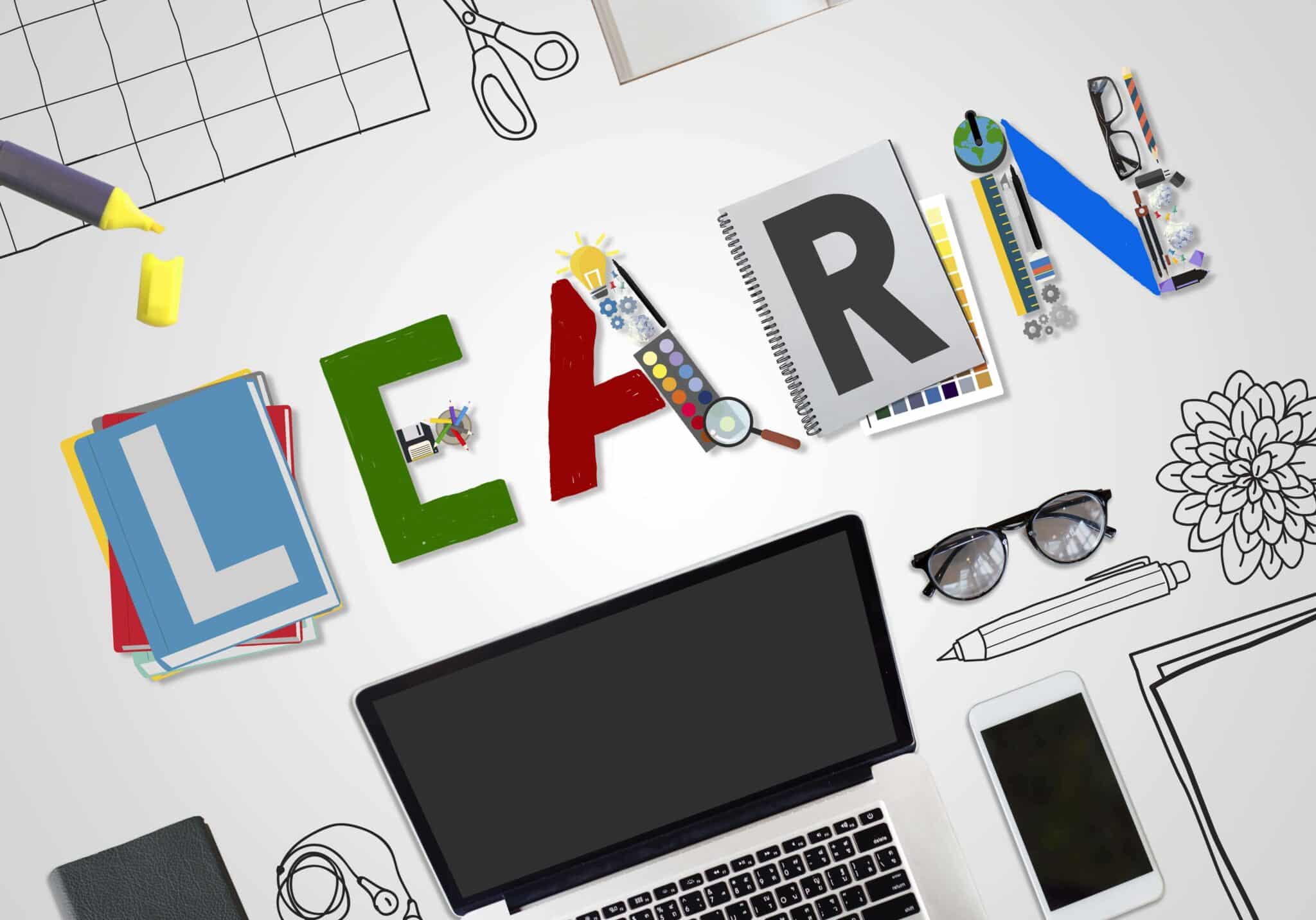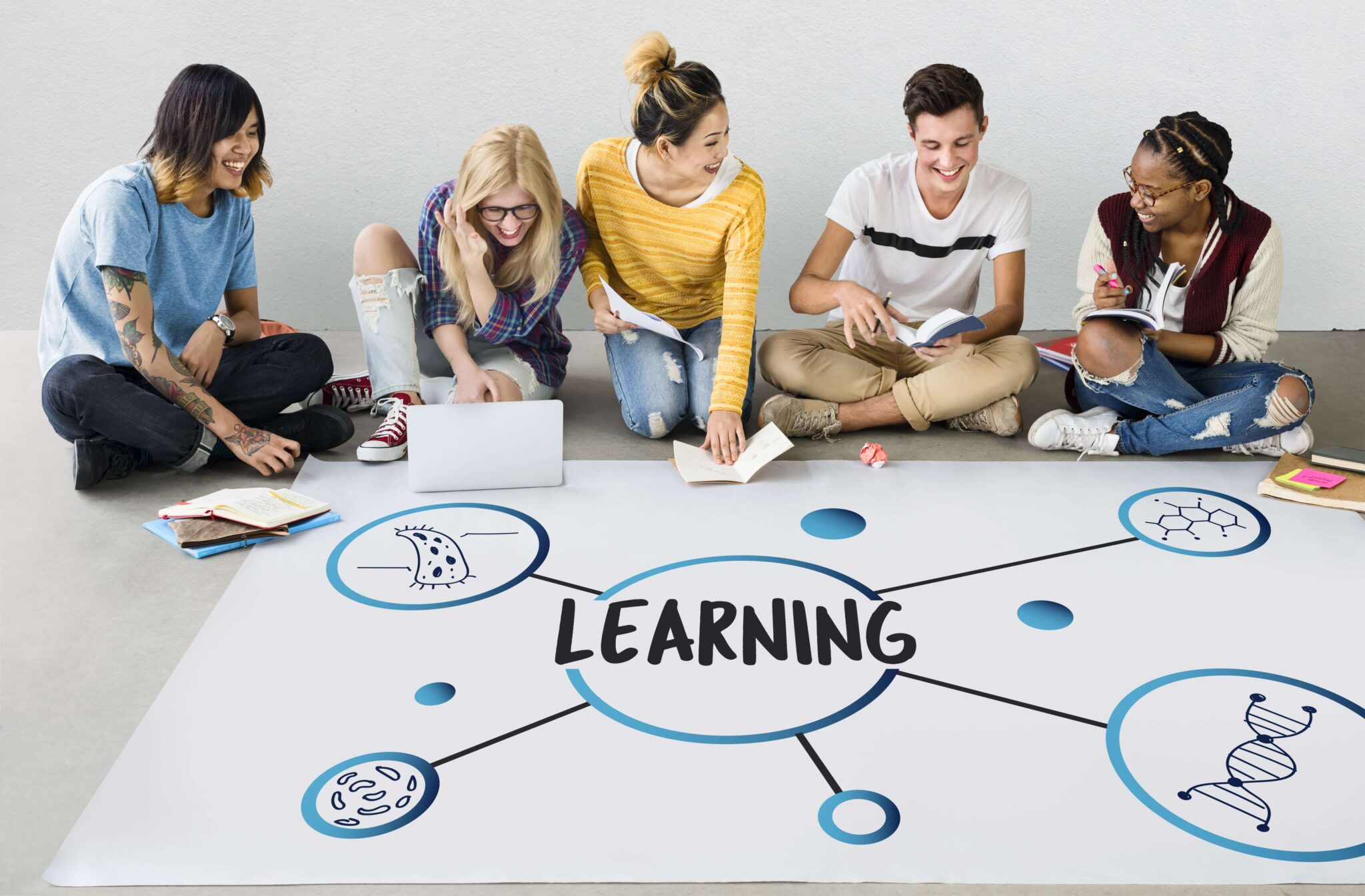In the world of Learning & Development, we’re haunted by a persistent question: Why do so many well-intentioned corporate workshops fail to deliver lasting impact? Companies invest significant budgets in training, yet “training fatigue” is a real phenomenon, and measurable ROI often remains elusive. The uncomfortable truth is that the problem isn’t always the content; it’s the approach. Too often, we treat training as a product to be delivered, a box to be checked.
But what if we shifted our mindset? What if we moved from the transactional model of training delivery to the transformational one of building true learning partnerships? A partnership goes beyond a contract and a slide deck. It requires a deep, mutual commitment to achieving a shared goal.
The experience reminded us once again that partnership is not a short-term promise. It’s a long-term commitment that often tests your patience, adaptability, and creativity.
This philosophy was recently put to the test when we partnered with one of our clients recently to deliver a two-day workshop. The experience reminded us once again that partnership is not a short-term promise. It’s a long-term commitment that often tests your patience, adaptability, and creativity. It was this very test that reinforced our belief in a partnership-first approach and revealed a framework that any L&D professional can use to create real impact
The Case Study: A Challenge in Facilitation
Table of Contents
This particular workshop was not an easy one. The two days were packed with:
- Leadership values walkthrough
- Deep dive into a psychometric tool and its relevance
- Exploring what makes a great team
- And, in between all this, emceeing the client’s award ceremony!
Sounds like a good challenge already? Here’s the twist: 70% of the participants were facilitators themselves. Imagine delivering to a room full of people who know the craft just as well as you do. This wasn’t an audience we could simply lecture; they were peers who would scrutinize every choice, every activity, every transition. Success was not guaranteed.
So, how did we make it work? The experience crystallized four key learnings, which we’ve come to see as the essential pillars for transforming any training session from a simple delivery into a dynamic partnership.
Pillar 1: From “Treat Each Workshop Differently” to Strategic Customisation
No two workshops are ever the same. You can’t rely on a standard formula and expect the same results. Every client, every participant group, every flow demands personalization. The more you customize, the more value participants take away.
For L&D professionals, this goes beyond changing the logo on the first slide. This is the principle of Strategic Customization. It’s the difference between content tailoring (adjusting a few examples) and contextual engineering (re-architecting the experience to reflect the team’s reality).
A true learning partner gets involved long before the workshop begins. This involves:
- Pre-Workshop Diagnostics: Conducting confidential surveys or interviews with participants to understand their specific challenges, skill gaps, and what they hope to achieve. This isn’t just about logistics; it’s about gathering intelligence.
- Stakeholder Interviews: Speaking with the team’s leadership and managers. What business outcomes are they expecting from this training? How does this workshop align with the department’s quarterly goals?
- Audience Segmentation: Understanding the nuances within the group. Are you training new managers, seasoned executives, or a mixed-seniority group? Each requires a different level of depth, pace, and style. A workshop for senior leaders who are also facilitators demands a co-creative, peer-level approach, not a traditional top-down one.
By investing in this deep discovery, the workshop ceases to be an off-the-shelf product and becomes a bespoke strategic intervention designed to solve the client’s specific problems.
Pillar 2: From “Understand the “Why” to Aligning with Business Imperatives
As facilitators, we must know the deeper “why” behind the topics. Participants should feel their time is being invested, not wasted. The learning must land well, connect with them personally, and add clear value.
In a corporate context, this “why” must operate on two levels: the participant’s and the organization’s. This is where a framework like the Kirkpatrick Model of Evaluation becomes indispensable.
- Level 1 (Reaction) & Level 2 (Learning): Most training programs are designed to get good feedback sheets and ensure participants can repeat key concepts. This is the baseline.
- Level 3 (Behavior) & Level 4 (Results): A partnership approach focuses here. The “why” must connect directly to a desired change in on-the-job behavior (Level 3) that will, in turn, drive a measurable business result (Level 4).
A facilitator in a true partnership should be able to answer the question, “Why are we doing this?” with a dual-focused response:
- For the employee: “This will provide you with the framework to manage team conflicts more effectively, reducing your day-to-day stress and making your one-on-ones more productive.”
- For the business: “And we are focusing on this because improving team collaboration is a key strategic objective for the company this year, directly impacting our project delivery timelines and innovation.”
When the learning lands well and adds clear value, it’s because this link between personal growth and organizational success is explicit.
Pillar 3: From” Create Easy Banter” to Engineering Psychological Safety
Stories, inputs, and laughter flowed throughout the two days. We made sure to remember them – and used them during the award ceremony. This transformed what could have been a dull segment into a lively, memorable experience. Banter builds connection.
For leaders and L&D professionals, “banter” is the visible outcome of a much deeper, more critical foundation: Psychological Safety. This is the shared belief that one can speak up, ask questions, challenge ideas, or admit a mistake without fear of being punished or humiliated.
The neuroscience of learning is clear:
- When learners feel connected and safe, their brains are primed for insight and creative thinking. This positive emotional state encourages the brain’s learning centers to be more receptive.
- Conversely, in a high-stakes, judgmental environment, the brain is flooded with cortisol. This triggers a “fight-or-flight” response that shuts down higher-order thinking and makes learning nearly impossible.
Engineering psychological safety is an active, not a passive, process. It involves techniques like:
- Intentional Icebreakers: Moving beyond cringe-worthy games to structured activities that build trust and encourage vulnerability.
- Setting the Rules of Engagement: Explicitly stating that all questions are welcome and that challenging ideas is encouraged as a sign of engagement.
- Facilitator Vulnerability: The facilitator sharing their own relevant struggles or learning moments, which signals to the group that it’s safe for them to do the same.
The laughter and stories weren’t just a happy accident; they were evidence that a foundation of trust had been successfully built.
Pillar 4: From “Stay Accommodating” to Mastering Adaptive Facilitation
We knew the agenda was heavy. Breaks were critical – sometimes even extended by a few minutes. Planning the day around the client’s needs, start and end times, and energy levels helped the workshop flow more smoothly.
This principle is the core of a practice known as Adaptive Facilitation. It’s the skill of “reading the room” and having the confidence to deviate from the script to serve the participants’ learning needs.
- A rigid facilitator is committed to the agenda. They must get through all 150 slides, no matter what.
- An adaptive facilitator is committed to the outcome. They listen to the conversations, notice where the energy is, and are willing to spend more time on a topic that is clearly resonating and generating value, even if it means shortening something else.
This aligns perfectly with the principles of andragogy (adult learning theory). Adults are self-directed and bring a wealth of experience to the room. An adaptive approach respects their autonomy and treats them as active participants rather than passive recipients. Staying accommodating isn’t just about extending a coffee break by five minutes; it’s about signaling to the participants that their needs, energy, and contributions are more important than the facilitator’s preconceived plan.
The Core Takeaway: The Strategic Shift from Vendor to Partner
At the heart of it, for any organization. Do you view your training facilitators as temporary vendors or as long-term strategic partners?
A vendor relationship is transactional. It’s defined by a scope of work, a delivery date, and a payment. A partnership, on the other hand, is relational. It’s built on a shared understanding of success. As the original post concludes, “if we as facilitators don’t enjoy the process, participants won’t either”. This enjoyment comes from the deep connection and shared purpose inherent in a partnership.
This is where the IDIC model from the book Managing Customer Relationships: A Strategic Framework fits so beautifully. It is the perfect blueprint for building this partnership::
- Identify: Truly know your participants – their roles, challenges, and goals..
- Differentiate: Understand what makes them unique and their business context unique. Don’t apply a one-size-fits-all solution.
- Interact: Engage in meaning dialogue before, during, and after the workshop to meet their needs.
- Customize: Tailor the entire experience – not just the content, but the flow, pace, and activities – to them.
The Rise of the Facilitative Leader
This partnership model doesn’t end when the external facilitator leaves. To achieve a true culture of learning, the most effective leaders must adopt these same principles. The future of leadership isn’t about having all the answers; it’s about becoming a Facilitative Leader.
A facilitative leader internalizes the four pillars:
- They practice strategic customization in their coaching, adapting their approach to each team member’s unique needs.
- They constantly connect their team’s daily tasks to the organizational “why,” giving their work purpose.
- They are architects of psychological safety, ensuring their team meetings are spaces for open dialogue and honest feedback.
- They lead adaptively, empowering their teams and adjusting plans based on new information and feedback.
When managers become in-house facilitators of learning and growth, they embed the workshop’s lessons into the daily workflow. This is how you achieve real, lasting transformation and a true return on your L&D investment.
Conclusion: An Enriched Partnership
Every workshop is a partnership. And like any strong partnership, it is a test of patience, adaptability, and trust. When done well, with a commitment to customization, a deep understanding of the “why,” a foundation of psychological safety, and a flexible, adaptive mindset, the results are profound. Both sides walk away enriched.
The ultimate goal is to notice the small factors that add value – in our connection, in the flow, and in the overall experience. Have you ever been in a situation where you had to rethink your entire approach to create real impact?








